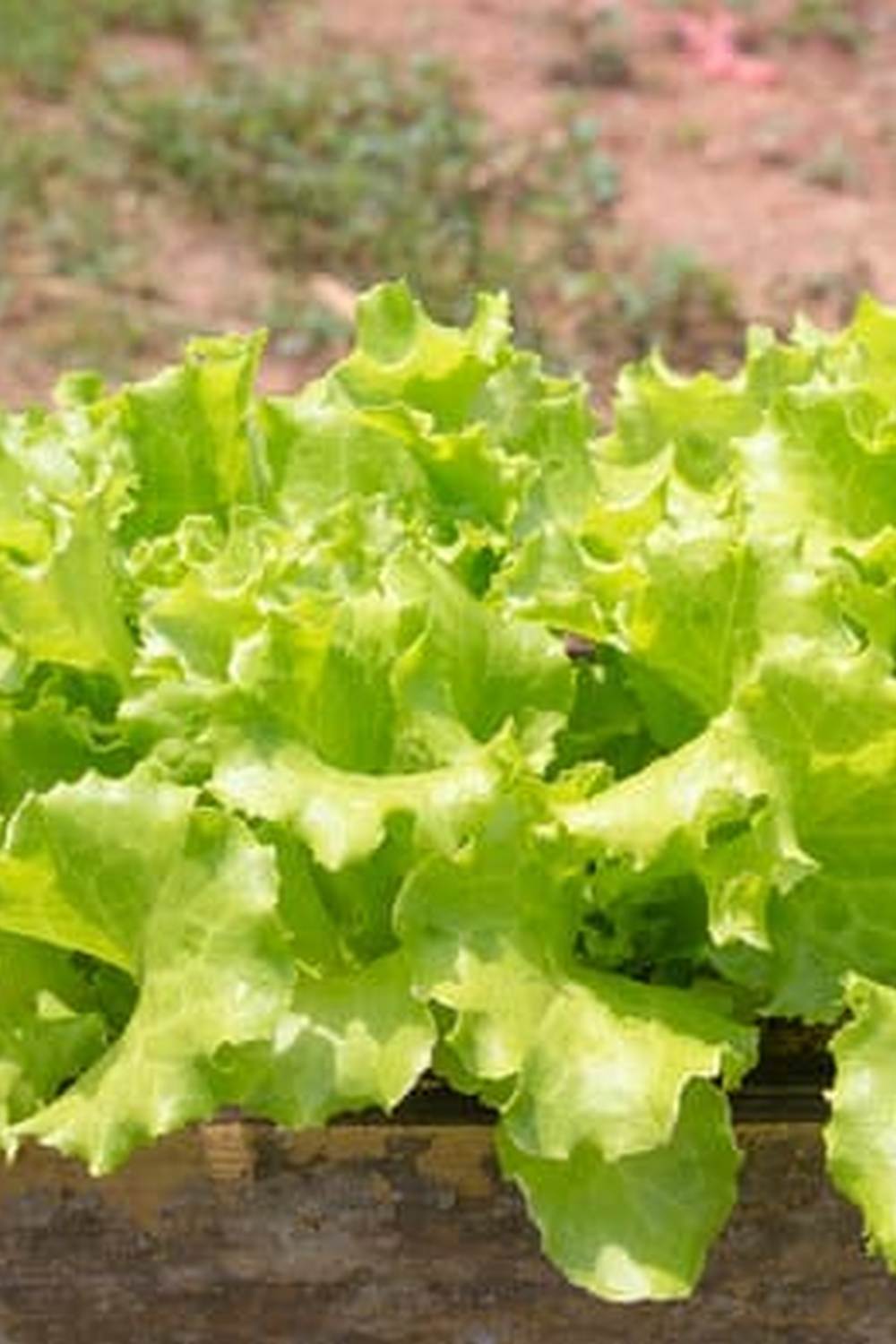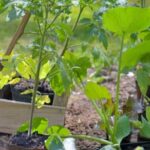Are you interested in starting a vegetable garden, but don’t want to wait a long time for your produce to grow? Quick vegetable gardening may be the perfect solution for you.
By choosing the right vegetables, location, and soil, as well as following some helpful tips and tricks, you can enjoy a bountiful harvest in a short amount of time. In this article, we will explore the benefits of quick vegetable gardening and provide you with all the information you need to get started.
Quick vegetable gardening offers numerous benefits for those who are short on time or space. Whether you’re a busy professional, have limited outdoor space, or simply don’t have the patience to wait months for your vegetables to mature, quick gardening allows you to enjoy homegrown produce without the long wait. With the right techniques and care, you can enjoy fresh and nutritious vegetables in just a matter of weeks.
In this section, we will discuss how to choose the right vegetables for rapid growth, selecting the perfect location for your quick vegetable garden, and preparing the soil to ensure optimal conditions for fast-growing plants. By following these key steps, you can set yourself up for success and enjoy a thriving garden in no time. So let’s dive in and explore the world of quick vegetable gardening.
Choosing the Right Vegetables for Quick Gardening
When it comes to quick vegetable gardening, choosing the right vegetables is crucial for a successful and bountiful harvest. Not all vegetables are equal in terms of growth rate, some can take months to mature while others can be ready for harvest in just a few weeks. Here are some vegetables that are perfect for quick vegetable gardening:
- Leafy greens: Lettuce, spinach, and arugula are great options for quick vegetable gardening. They can be ready for harvest in as little as 4-6 weeks after planting.
- Radishes: This root vegetable is known for its speedy growth, and can be ready to harvest in just 3-4 weeks after planting.
- Green onions: These flavorful vegetables are fast-growing and can be harvested within 3-4 weeks of planting.
- Baby carrots: Unlike their full-size counterparts, baby carrots are quick to mature and can be harvested in about 30 days.
When selecting the right vegetables for your quick vegetable garden, consider not only the growth rate but also your personal preferences and what grows well in your climate. By choosing the right vegetables, you can enjoy a plentiful harvest in no time.
Remember that different varieties of each type of vegetable may have different growth rates. Look for varieties specifically bred for quick growth when planning your garden. With the right selection of vegetables, you’ll have fresh produce from your quick vegetable garden in no time.
Selecting the Perfect Location for Your Quick Vegetable Garden
When it comes to quick vegetable gardening, selecting the perfect location for your garden is crucial to ensure optimal growth and harvest. Here are some tips for choosing the right location for your quick vegetable garden:
1. Sunlight: Choose a location that receives at least 6-8 hours of sunlight per day. Most vegetables thrive in full sunlight, so it’s important to find a spot in your yard or balcony that gets plenty of sunlight.
2. Access to Water: Ensure that your chosen location has easy access to water. Whether you have a hose or a watering can, convenience is key when it comes to keeping your vegetables adequately hydrated.
3. Good Drainage: Select an area with good drainage to prevent waterlogging, which can lead to root rot and other issues. Avoid low-lying areas where water tends to collect after rainfall.
4. Protection from Wind: If possible, choose a location that offers some protection from strong winds. Wind can damage young plants and dry out the soil quickly, so finding a somewhat sheltered spot can benefit your quick vegetable garden.
By carefully considering these factors when selecting the location for your quick vegetable garden, you can set yourself up for success and ensure healthy growth for your favorite vegetables. Remember that different vegetables may have specific needs regarding sunlight, water, and soil conditions, so it’s important to research the requirements of the specific vegetables you plan to grow in your quick vegetable garden.
Preparing the Soil for Fast-Growing Vegetables
When it comes to quick vegetable gardening, preparing the soil is a crucial step in ensuring the success of your garden. Fast-growing vegetables require nutrient-rich soil that is well-draining and fertile. By taking the time to properly prepare your soil, you can provide your vegetables with the ideal environment for rapid growth and abundant harvests.
Testing and Amending Your Soil
Before planting your fast-growing vegetables, it’s important to test the pH and nutrient levels of your soil. You can purchase a soil testing kit from your local garden center or cooperative extension office.
Once you have the results, you can then amend the soil as needed to create the perfect growing conditions for your vegetables. Adding organic matter such as compost or well-rotted manure can help improve soil structure and fertility, while also providing essential nutrients for plant growth.
Tilling and Aerating
In order for fast-growing vegetables to thrive, the soil needs to be loose and well-aerated. This allows for better root development and promotes efficient water and nutrient uptake. Use a tiller or garden fork to loosen compacted soil and break up any clumps. This will also help improve drainage and prevent waterlogging, which can stunt the growth of your vegetables.
Mulching
Once you’ve prepared the soil for planting, consider applying a layer of mulch around your fast-growing vegetables. Mulch helps retain moisture in the soil, suppresses weed growth, and maintains a more even soil temperature-all factors that contribute to healthy and speedy vegetable growth. Organic mulches such as straw or shredded leaves also break down over time, adding valuable organic matter to the soil.
By taking these steps to prepare your soil for fast-growing vegetables, you’ll be laying the groundwork for a productive and bountiful quick vegetable garden. With nutrient-rich, well-draining soil in place, your vegetables will have everything they need to grow quickly and provide you with a satisfying harvest in no time.
Tips for Speeding Up the Growth of Your Vegetables
Optimize Soil Conditions
One of the keys to quick vegetable gardening is ensuring that your soil is optimized for rapid growth. To speed up the growth of your vegetables, make sure that the soil is rich in nutrients and well-draining. Adding compost or organic matter to the soil can provide essential nutrients and improve its texture, allowing for better water retention and aeration.
Control Watering and Fertilization
Proper watering and fertilization are crucial for promoting fast growth in your vegetable garden. Consistent, deep watering can encourage strong root development, while regular application of a balanced fertilizer can provide the necessary nutrients for rapid plant growth. However, it’s important to avoid overwatering and over-fertilizing, as this can lead to issues such as root rot and nutrient burn.
Utilize Season Extension Techniques
To speed up the growth of your vegetables, consider using season extension techniques such as row covers, cold frames, or hoop houses. These tools can help protect your plants from early spring frosts or extend the growing season into late fall, allowing you to harvest your vegetables sooner. Additionally, using black plastic mulch or fabric can help warm the soil and promote faster growth in cooler climates.
By implementing these tips for speeding up the growth of your vegetables, you can maximize the potential of your quick vegetable garden and enjoy a bountiful harvest in no time. Remember to closely monitor the progress of your plants and adjust your strategies as needed to ensure healthy and rapid growth.
Maintenance and Care for Quick Vegetable Gardens
Maintaining and caring for a quick vegetable garden is essential to ensure a successful and bountiful harvest. Regular maintenance will help prevent pest infestations, diseases, and nutrient deficiencies that can hinder the growth of your vegetables. One important aspect of maintenance is watering your plants regularly to keep the soil consistently moist but not waterlogged. Be mindful of the specific water needs of each type of vegetable in your garden.
In addition to watering, regular weeding is crucial to prevent unwanted plants from competing with your vegetables for nutrients and sunlight. Weeds can quickly overtake a garden if left unchecked, so it’s important to stay on top of this task. Mulching can also help suppress weeds and retain moisture in the soil, reducing the need for frequent watering.
Lastly, staying vigilant for signs of pests and diseases is an important part of caring for your quick vegetable garden. Keep an eye out for any abnormalities in the leaves or stems of your plants, as well as any signs of insect activity. Quick action at the first sign of trouble can prevent a small issue from becoming a major problem that could devastate your garden.
| Maintenance and Care Tips | Details |
|---|---|
| Regular Watering | Keep the soil consistently moist, but not waterlogged, by watering your plants regularly. |
| Weeding | Regularly remove weeds to prevent them from competing with your vegetables for nutrients and sunlight. |
| Pest and Disease Control | Stay vigilant for signs of pests and diseases, taking quick action at the first sign of trouble. |
Harvesting and Enjoying the Fruits of Your Quick Vegetable Garden
After putting in the hard work of planting, watering, and maintaining your quick vegetable garden, it’s finally time to reap the rewards. One of the best things about quick vegetable gardening is that you don’t have to wait long to start enjoying your homegrown produce. Many fast-growing vegetables are ready to harvest in just a few weeks, allowing you to enjoy fresh, nutritious produce without a long wait.
When it comes to harvesting your quick vegetables, timing is key. You’ll want to keep an eye on each type of vegetable you’ve planted and make sure to pick them at the right time for the best flavor and texture.
For example, leafy greens like lettuce and spinach should be harvested when they reach a good size but before they start to bolt or turn bitter. Root vegetables like radishes and carrots should be pulled when they reach their mature size but are still tender.
Once you’ve harvested your vegetables, it’s time to enjoy them. There’s nothing quite as satisfying as sitting down to a meal that features ingredients you’ve grown yourself. Use your freshly picked vegetables in salads, stir-fries, smoothies, or simply enjoy them on their own with a sprinkle of salt. The taste of homegrown produce is often far superior to store-bought options, making all the effort put into quick vegetable gardening well worth it.
| Vegetable | Time From Planting to Harvest |
|---|---|
| Lettuce | 30 days |
| Radishes | 3-4 weeks |
| Spinach | 4-6 weeks |
Troubleshooting Common Issues in Quick Vegetable Gardening
In conclusion, quick vegetable gardening can be a rewarding and efficient way to enjoy the benefits of fresh produce right in your own backyard. By choosing the right vegetables, finding the perfect location, preparing the soil, and using tips to speed up growth, you can have a thriving garden in no time. With proper maintenance and care, you can ensure that your quick vegetable garden continues to flourish, leading to a bountiful harvest for you to enjoy.
However, even with the best intentions and efforts, common issues can arise in quick vegetable gardening. These may include pest infestations, diseases, nutrient deficiencies, or environmental factors that can affect the growth and health of your plants. It is important to be proactive in identifying and addressing these issues before they become more serious problems that could jeopardize your garden’s success.
By keeping a close eye on your quick vegetable garden and taking preventative measures such as regular inspections for pests or diseases, monitoring soil moisture levels, and providing proper nutrients, you can minimize the risk of common issues occurring. With patience and diligence in troubleshooting any problems that may arise, you can continue to enjoy the benefits of quick vegetable gardening throughout the growing season.
Frequently Asked Questions
What Is the Quickest Vegetable to Grow?
The quickest vegetable to grow is often radishes, which can be ready to harvest in as little as 3-4 weeks. These fast-growing vegetables are perfect for impatient gardeners or those looking for quick results.
What Vegetables Can Grow in 2 Weeks?
Some vegetables that can grow in 2 weeks include microgreens like arugula, radish, and kale. These tiny greens are not only quick to grow but also packed with nutrients, making them a popular choice for home gardeners.
What Is the Easiest Vegetable Garden for Beginners?
For beginners, the easiest vegetable garden might include low-maintenance plants like tomatoes, lettuce, and carrots. These vegetables are relatively easy to grow and can thrive in various climates, making them ideal for those new to gardening.

If you’re looking to get into vegetable gardening, or are just looking for some tips on how to make your current garden better, then you’ve come to the right place! My name is Ethel and I have been gardening for years. In this blog, I’m going to share with you some of my best tips on how to create a successful vegetable garden.





